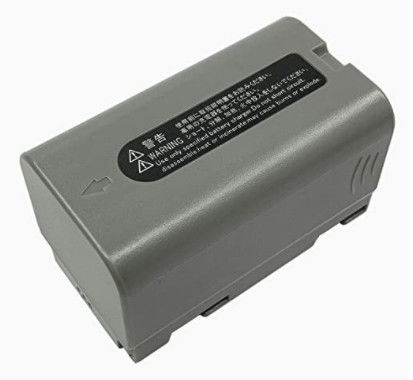-
Surveying Reflector Prism
-
Survey Mini Prism
-
360 Degree Prism
-
Total Station Prism
-
Prism Pole Bipod
-
Carbon Fibre Telescopic Pole
-
Telescopic Levelling Staff
-
Tribrach Adaptor
-
Instrument Tripods
-
Total Station Batteries
-
Total Station Battery Charger
-
Total Station Cable
-
Total Station Accessories
-
Surveying Instrument
BDC70 Total Station Batteries 41mm Topcon Bdc70 Battery

Contact me for free samples and coupons.
WhatsApp:0086 18588475571
Wechat: 0086 18588475571
Skype: sales10@aixton.com
If you have any concern, we provide 24-hour online help.
x| Voltage | 7.2V | Size | 74*41*41 (mm) |
|---|---|---|---|
| Capacity | 5968mAh | Cell Type | Li-lon |
| Color | Grey | Replace | BDC-70 |
| Charging Time | 3 Hours | Temperature | 10~40 °C |
| Condition | New | Fits | TOPCON OS/ES And Sokkia CX/RX-350 |
| Highlight | BDC70 Total Station Batteries,41mm Total Station Batteries,topcon bdc70 battery |
||
New Type Topcon Sokkia Battery BDC72 Replace BDC70 Battery for Topcon Total Station OS/ES Surveying Batteries
Model: BDC72
Specifications:
| Voltage | 7.2V |
| Dimension | 74*41*41 (mm) |
| Type | Li-lon |
| Capacity | 5968mAh |
| Package | Individual Box Package |
| Warranty | 12 Months |
| Temperature | 10~40 °C |
| Rechargeable | Yes |
| Charging Time | 3 Hours |
| Used For | TOPCON OS/ES and Sokkia CX/RX-350 |
Highlights:
- Voltage: 7.2V
- Battery Type: Li-ion
- Capacity: 5986mAh 43.09Wh
- Fit for TOPCON GM-52 Total Station
Introduction:
The Topcon/Sokkia BDC72 grey Li-Ion Battery for Topcon and Sokkia total stations and lasers. This grey higher capacity battery replaces the older BDC70 black battery.
Fits: Topcon GM, GT, OS & ES series, Sokkia CX, FX series total stations. Also Topcon TPL6 series pipe lasers.
Note: this battery is NOT compatible with the old black CDC68 charger. Instead, it requires the new grey CDC77 charger TOP1038707-01.
How long will the battery last?
There are two factors: runtime and charge-discharge cycles.
Runtime is a measure of how much time can elapse before a fully charged battery reaches a charge of 0%. Technically a battery never reaches a 0% charge but a low charge does not permit enough power to be transmitted to the device.
Runtime is controlled by capacity and usage. Capacity is measured in Amp hours or milliamp hours. Battery capacity quantifies the total amount of energy stored within a battery. More capacity equals longer runtime between battery charges. Hence if you want a battery to last the longest possible be sure to buy a battery with the highest possible capacity. For example a battery it a capacity of 2000 mAh will last longer in between charges than a battery with 1500 mAh capacity.
Runtime is also increased or decreased by usage.
All batteries slowly drain regardless if you are using it in your device or not! Once charged an electron flow occurs in a battery and once begun the electron flow will continue until the chemical is exhausted.
Chemical depletion occurs with every charge-discharge cycle. What is actually occurring during this charge-discharge cycle is replenishing spent electrons (i.e. creating current – an electrical flow)). In batteries electricity is created by charging two chemicals in a solution. This is done by applying an electrical flow (i.e. from a wall or car charger or solar charger) to the battery’s lithium.
Charging lithium can be thought of as the introduction of ions or movement of chemistry. To move the lithium chemistry (lithium-ion, lithium polymer, lithium iron phosphate, etc) you have to have a minimum voltage applied to the lithium. Most battery cells are charged to 4.2 volts with relative safe workings at about 3.8 volts. Anything less than 3.3 volts will not be enough to charge or move the chemistry. One thing to note here is that volts are an algorithmic measurement of current. So in a sense to create current through your battery you have to introduce current into your battery’s lithium .
Introducing current into your lithium is called intercalation. Intercalation is the joining of a molecule (or molecule group) between two other molecules (or groups). When it comes to charging your battery you are in effect pushing ions in and out of solid lithium compounds. These compounds have minuscule spaces between the crystallized planes for small ions, such as lithium, to insert themselves from a force of current. In effect ionizing the lithium loads the crystal planes to the point where they are forced into a current flow. The current flow is then channeled back and forth from anode to cathode and thereby creating an electrical flow to power on your device. Again this can done 300-500 times before all the ions are pushed out of the lithium and you will no longer be able to charge your device.
![]()
![]()
![]()









